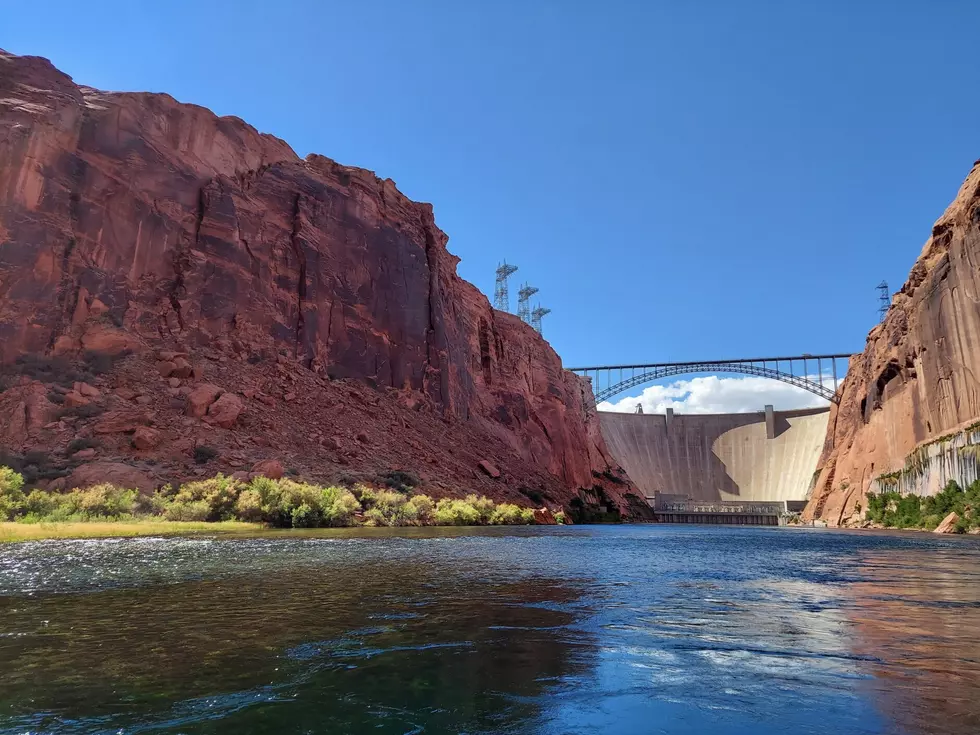
Water managers utilizing technology, innovation to combat effects of drought
Bob Leal
LAS VEGAS (CN) — “Our river is in trouble,” said Brenda Burman, executive strategy advisor for the Central Arizona Project, while addressing those assembled at Colorado River Water Users Association’s annual conference at Caesars Palace on Wednesday.
The CRWUA is a nonprofit, nonpartisan organization that provides an opportunity for the exchanging of ideas on the imperiled Colorado River with the goal of advocating common objectives, innovations and solutions.
The Colorado River Basin is made up of four states from the upper basin — Colorado, Wyoming, Utah and New Mexico, and three states from the lower basin — Nevada, California and Arizona. Also in the mix are 30 Native American tribes and Mexico. The river supplies water to 40 million people and five million acres of agricultural land that make up a $5 billion industry.
“We want to leave this river in a better place than when we found it,” said Burman. “It’s up to us to stabilize the river system.” Additional cuts will have to be made and water will cost more, she said. A key to handling the challenges is to be “smarter and more efficient.”
One of the panel discussions highlighted new technologies and tools water managers are using to get the most out of a dwindling supply of water during this mega-drought going on more than 20 years in the western states.
After learning about a study from the University of California Merced, the Turlock Irrigation District, the oldest irrigation district in the state founded in 1887, was very interested in putting the university’s ideas to work: placing solar panels over irrigation canals.
A 2021 UC Merced study found that covering 4,000 miles of public water delivery system infrastructure in California with solar panels can save a significant amount of water from evaporation while generating power and lowering maintenance costs.
According to the study, California could save 63 billion gallons of water annually while generating 13 gigawatts of solar power, equal to about one-sixth of the state’s current installed capacity.
The concept of placing solar panels has been talked about for years, said Josh Weimer, external affairs manager at the Turlock Irrigation District, located in California’s Central Valley.
There’s been talk for decades, but there’s never been “tangible” engineering plans about what it would take, said Weimer. The Turlock Irrigation District is currently testing the projections from the study on a much smaller scale. It’s the first in the nation to implement the plan, which is a public/private/academic collaboration. The Department of Water Resources is providing funding and technical expertise.
According to Weimer, the irrigation district will lower its maintenance costs by reducing aquatic growth, which will also lead to better water quality.
Some of the innovation in the conservation of water takes place in the skies.
Tom Painter, founder and chief executive officer of Airborne Snow Observatories, Inc., said his company is using lidar-equipped planes to provide highly accurate and reliable basin-wide measurements of snowpack and forecasts of snowmelt runoff.
Airborne is using its technology it developed at the NASA Jet Propulsion Laboratory for customers who need accurate measurements for water management.
The planes fly over an area to get an initial read (baseline) of the landscape. Then when there is a snowpack, the lidar on the plane sends pulses of laser light to the landscape to determine the presence, shape and distance of objects in great detail. The data collected helps water managers make decisions. For instance, if there is a larger snowpack than expected, water managers can be armed with knowledge to make better decisions.
Another water-saving innovation at Lake Mendocino in California utilizes forecasting advancements to enhance flood protection capacity while improving downstream flows for fish habitat.
Sara Tucker, a lobbyist for Sonoma County Water Agency, said Lake Mendocino, which feeds the Russian River watershed, used to make decisions on when and how much water is released based on a Water Control Manual that was written in the 1950s.
Tucker says now decisions are based on FIRO — Forecast-Informed Reservoir Operations, which takes into account the weather 14 days in advance.
“It gives us flexibility on how we store water,” said Tucker. She said when the forecast hints at dry weather, Lake Mendocino water managers can hold back more water.
